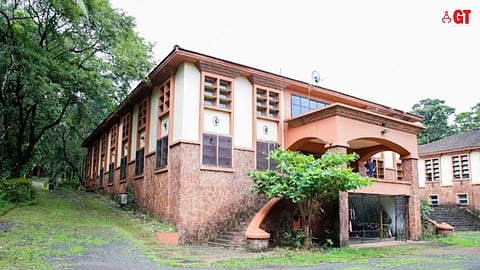

BY FR CARLOS LUIS SAC
Very recently, I had the privilege as the Mission Secretary of the Assumption of the Blessed Virgin Mary (ABVM) Province of the Pallottines to accompany Fr Reinhold Maise, SAC. Fr Reinhold Maise, who belongs to our mother province (now called the Heart of Jesus Province, Friedberg, Germany), was on a visit to India to learn and understand the immense contributions made by the German missionaries to the faith in India and the birth of the Pallottines in India.
Accompanying him, especially in Goa and Karnataka, made me realise that the sacrifices of the pioneering missionaries have borne tremendous fruit, and we ought to be grateful for the same.
Thus, as the Pallottines in Goa celebrate 60 years of the Pallottine Mission, it fills us with pride and also humbles us when we recollect the vast spiritual enrichment we have been able to render to the people of Goa by the grace of the Almighty God.
After twelve years of India's freedom and when it was taking baby steps as a sovereign nation, Fr Julius Moser, SAC, came to India for his missionary expedition.
Fr Moser, as I am told, was a priest of valour, courage and fortitude. He had been working in the remote missions of Australia when asked to take charge of the students in Goa. He was more than willing to leave his comfort zone and explore the uncertain.
After twelve years of India's freedom and when India was taking baby steps as a sovereign nation, Fr Julius Moser, SAC, came to India for his missionary expedition.
Fr Moser landed in Goa in September 1959 and resided in the Archbishop's House, but by December he relocated to the Patriarchal Seminary in Rachol to be with the students Br John Bechtlof, Br Dieter Grey and Br Anton Nenzl, who arrived in Goa from Karachi on December 19, 1959. Brothers Bechtlof and Grey had completed their second year of theology, while Br Nenzl was still a first-year student of theology. They resided at the Seminario Patriarcal de Rachol and pursued their theological studies.
Fr Moser began to look for an appropriate house in Goa where the brothers and he could live. In the year 1960, in Assagao, the house belonging to the Athaide family, a colossal manor, was acquired. This became the principal house of the Pallottines in Goa and was named Casa Pallotti.
In 1964, Fr Grey and Fr Nenzl saw the need for Casa Pallotti to become an apostolic school, which housed a modest number of 10 students. After attending the Assagao school, they subsequently completed their elementary at St Britto's School, Mapusa.
In 1979, Casa Pallotti was made a philosophical institute, and in the same year, land was procured in Chicalim. Progressively, the apostolic school with 11 students was moved into the Chicalim house. When they were done with their SSC studies, the school closed its attendance in May 1983.
In 1985, Pallotti Home, a retreat hub, was erected and blessed in Chicalim. Fr Henry Kieffer, SAC, who was a prisoner of war in the Second World War, spent 20 years of his priestly life in Goa.
Fr Kieffer is a well-known priest who came to Pallotti Home in 1985 and contributed immensely to the formation of the faithful; hearing confessions for long hours, and visiting and taking Communion to the sick, the suffering and the poor in and around Chicalim.
Fr Nenzl, on the other hand, worked in different capacities in Goa. I had the privilege of being his student at Pallotti Jyothi Niwas, Chandor, where he worked last. As a rector, I have noticed in him a special commitment to the priesthood and exceptional devotion to Mother Mary, Queen of the Apostles. The three institutions that continue to flourish in Goa are the result of his foresight.
Fr Henry and Fr Nenzl became silent visionaries and leaders who, through their humble personalities, taught the Pallottines in Goa to stay rooted in the religious order’s charism ie to revive faith and rekindle charity, and execute change.
From then on to date, the Pallottines have been working in the Archdiocese of Goa and Daman, and have been entrusted with three foundations for formation: Casa Pallotti (1962), Pallotti Home (1978) and Pallotti Jyothi Niwas, Chandor (2002), and five parishes for pastoral care in the archdiocese: St Joseph's Church, Pernem (1996), St Francis Xavier Church, Mormugao (1997), St Sebastian's Church, Tormas (1997), Our Lady of Assumption Church, Sarzora (1999) and Our Lady of Miracles Church, Badem (2012). Pallottines through their pastoral, educational and social ministry continue to assist the faithful to come closer to God.
On this auspicious occasion of 60 years of the Pallottine Mission in Goa, we remember the efforts of our missionary German Pallottine priests, the Goan and other priests who have tirelessly worked in Goa, and the lay faithful who have accompanied us all through.
We hope and pray that we will zealously continue to revive the faith in the current changing world and rekindle charity, reaching out to the marginalised in our society.